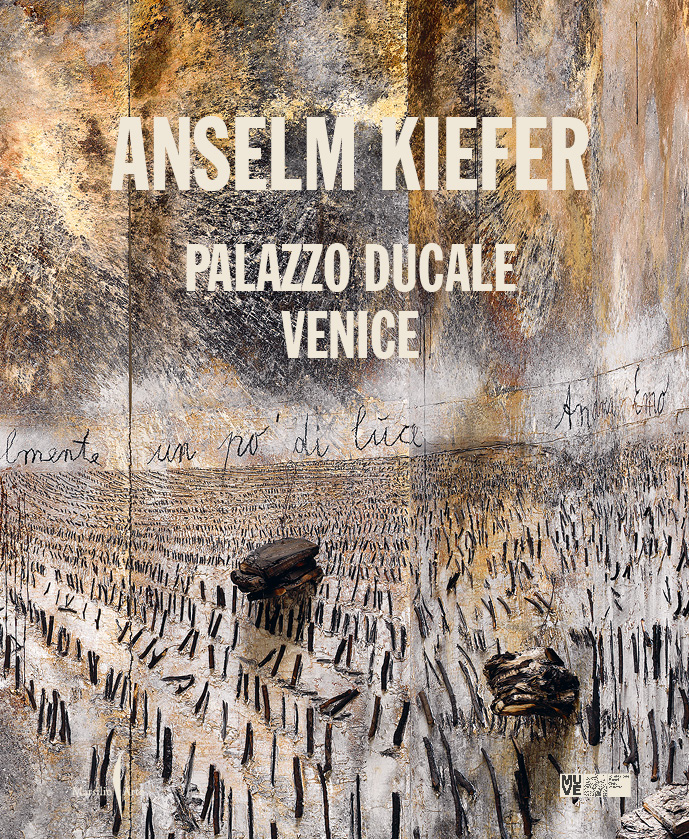
The book and the exhibition (Venice, Doge’s Palace - Sala dello Scrutinio, 26 March - 29 October 2022) represent an important opportunity to confront the themes of history, myth and memory, embracing the vision of one of the greatest artists of our time, Anselm Kiefer.
“It sometimes happens that there is a convergence between past and present moments, and as they come together one experiences something of that stillness in the hollow of a wave about to break. Originating in the past but pertaining at bottom to something more than the past, such moments belong as much to the present as to the past, and what they generate is of the utmost importance.” Anselm Kiefer
Does contemporary public art exist? Can a democracy still use art to represent its values? Is it possible to imagine a public art based on universal values? These are the questions Anselm Kiefer addressed in creating a series of new works now on display in the Sala dello Scrutinio in the Doge's Palace in Venice during the 59th Art Biennale. Kiefer was invited by the Fondazione Musei Civici di Venezia to present a site-specific installation that establishes a dialogue with the works present in one of the most important rooms of the Doge's Palace (and in the history of Venice), painted after the fire of 1577 by the great artists of the time, including Tintoretto, Andrea Vicentino and Palma il Giovane.
Kiefer is one of the greatest living artists and is known for his visual research that draws on literature, philosophy and history, in a reflection that is always involved with the existential dimension. In the case of the works for the Doge's Palace in particular, the artist is inspired by the thinking of Andrea Emo, a philosopher born at the beginning of the twentieth century into a Venetian family of noble origins, who, like Keefer himself, affirmed the impossibility of defining art except as an infinite oscillation between loss and rebirth.
The book opens with a reflection by Gabriella Belli on Kiefer's work and on its meaning in the context of the Doge's Palace. It continues with a letter from the artist to Belli, in which he describes the stages of his work on this installation, which lasted over three years. Jeanne Sirén discusses the concepts of being and time in Kiefer's work, and the artist's relationship with the city of Venice. Salvatore Settis explores the relationship between Kiefer and the Doge's Palace, analysing differences and analogies between public art at the time of the Serenissima and the commissioning of this work. Massimo Donà provides a philosophical framework for Kiefer's relationship with Andrea Emo, the philosopher who inspired him on this occasion, while Jean de Loisy investigates the geophysics of his painting. The book closes with an essay by Elisabetta Barisoni that sets out the artist's career in Italy from his first appearances in the 1980s, and with a dialogue between Hans Ulrich Obrist and the artist himself, a fresco of reflections that interpret this Venetian cycle by Kiefer for the Doge's Palace, which constitutes an extraordinary contribution to the visual arts of the twenty-first century.